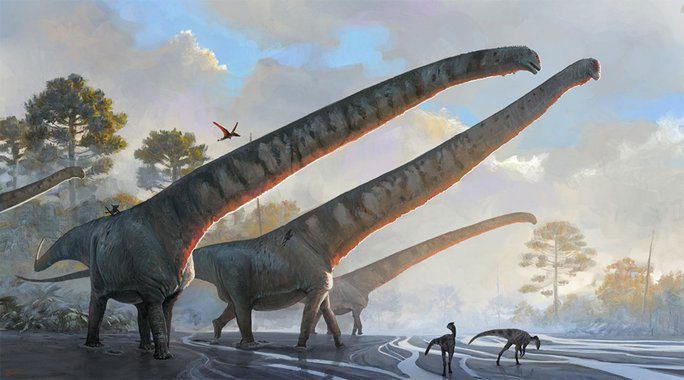Mamenchisaurus sinocanadorum is a dinosaur species that lived during the Jurassic period (approximately 201 to 145 million years ago) and is noted for its remarkably long neck. The first fossil fragments of this dinosaur were discovered in Xinjiang, China, about 30 years ago.
According to Sci-News, Mamenchisaurus sinocanadorum is a previously undescribed member of the gigantic sauropod dinosaur family, known for its massive body, strong legs, and long neck, and it was a gentle herbivore.

The strange appearance of the Jurassic monster in Xinjiang, China – (Photo: Júlia d’Oliveira).
The initial descriptions of the anatomical features of Mamenchisaurus sinocanadorum were made in 1993, following the discovery of several sparse fragments of an individual at the Shishugou Formation in the Junggar Basin, a fossil-rich location in Xinjiang, China.
However, with only a few fragments of the skull and neck, fully depicting this colossal creature proved to be a challenging endeavor.
In a recent study published in the Journal of Systematic Palaeontology, a team of scientists led by paleontologist Andrew Moore successfully estimated and described the body of this mysterious creature, discovering it possessed an incredible neck measuring 15.1 meters.
Graphic illustrations show that above this long and sturdy neck sits a small head, attached to a body that, while large, is significantly shorter than the neck, balanced by a massive, heavy tail.
“All sauropod species are large, but the astonishing long necks did not evolve just once. Mamenchisaurus sinocanadorum is significant because it pushed the limits of neck length,” Dr. Moore stated, asserting that this is the longest-necked sauropod known to date.
Many mysteries still surround the creature’s body structure and how it maintained balance with such a long neck while moving. The study indicates one possible mechanism based on the vertebrae found: in addition to hollow, lightweight vertebrae similar to bird bones, there is also a section of “cervical ribs” on either side of the neck, extending up to 4 meters near the body to enhance the neck’s stability.
However, this information is still insufficient to fully explain the many peculiar characteristics of its anatomy. Scientists hope that future excavations of this species and its related sauropods will provide more concrete answers.


















































